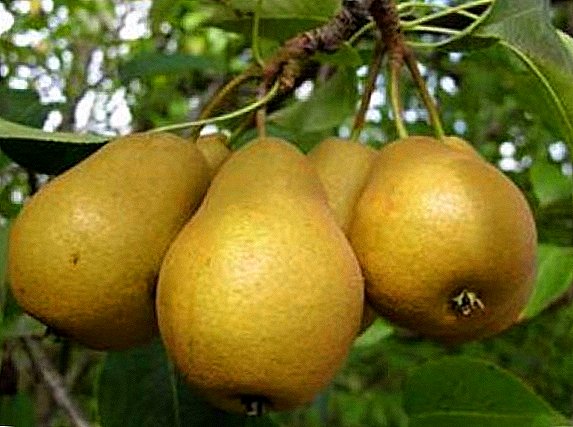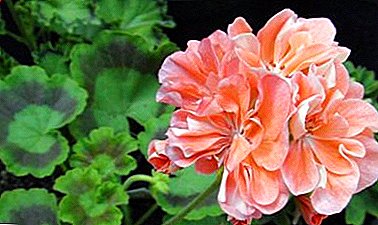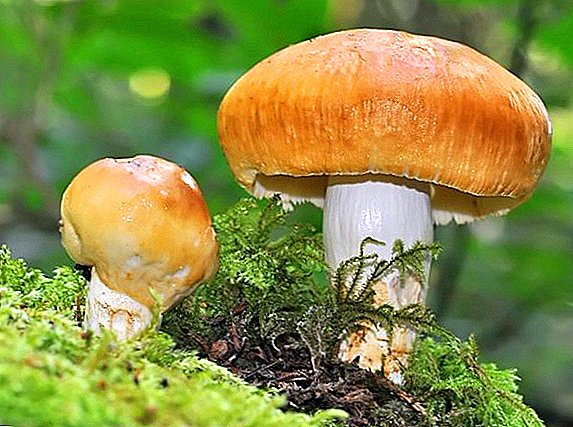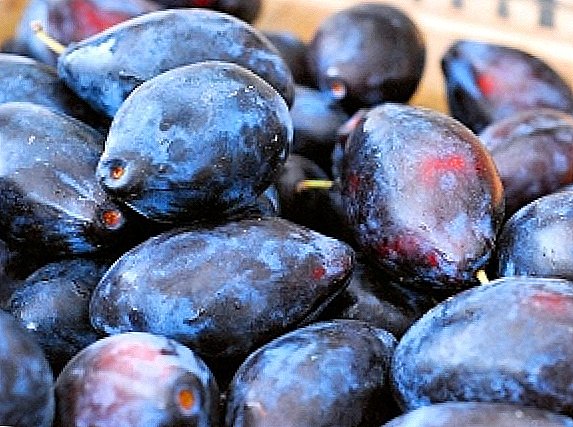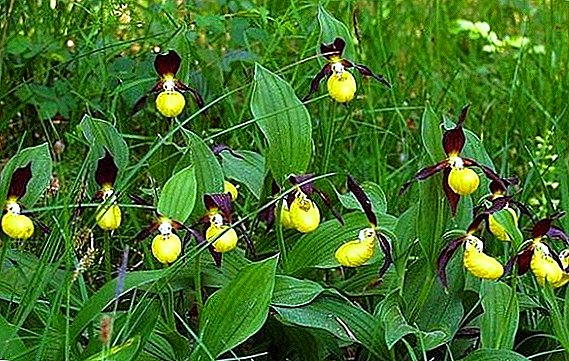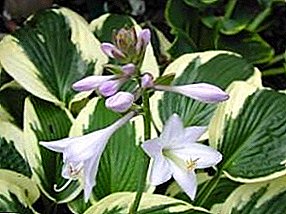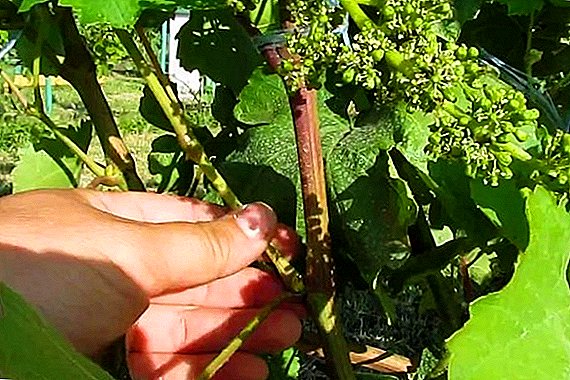
Begonias exist in such a quantity that even experienced growers sometimes get confused in views. The article will discuss the yellow begonias.
We have prepared information that these flowers are, how to care for them, multiply, what are the nuances and subtleties that are useful for the lover of indoor plants.
Also in the article we learn how to properly care for the yellow begonia, and what pests and diseases can harm the plant.
Botanical description and history
Begonia xanthina or yellow begonia belongs to the Begonia family. Its homeland is the tropics and subtropics of Africa, America and Asia. As a species, begonias are found in the form of grassy forms, semi-shrubs and shrubs, creeping plants (for more information on bush begonias, read here). The fruit is formed in the form of a box with numerous seeds. Foliage and stems are usually deep green. Perfectly established Begonia as a indoor flower.
Yellow begonia is a shrub reaching a height of 40-50 cm. The shoots are recumbent, the leaves are about 15 centimeters wide, about 20 centimeters high. Flowers are combined in inflorescences.
Description of the appearance and photo varieties
There are several varieties of yellow begonias, which have their own distinctive external differences.
Pikoti
It is presented by large inflorescences of a yellow shade with a red border.

Yellow full
The largest representative. The diameter of the flowers reaches 14-15 centimeters.

Ampelous yellow
Long, branching and hanging shoots up to 50 centimeters. Flowers pure, yellow color on elongated peduncles.

Ampel cascade
Even longer and thinner, branching shoots with bright yellow flowers. This variety is ideal for vertical wall decoration.
Important! Some fans share the varieties of tuber and double begonias. In fact, it is the same flower.
The photo shows the Ampelnaya cascade:

Where and how to plant?
Begonia does not tolerate direct sunlight, so fit south-east, and preferably the west window. The pot should be chosen according to the size of the root system.
Home care
Lighting
Only diffused lighting, partial shade is suitable. Open sunshine is detrimental to begonias as well as to most indoor flowering plants.
Temperature
Better to keep the flower in a cool place. However, the temperature should not fall below 15 degrees.
Watering
Yellow begonia does not tolerate both excess and lack of moisture. It is necessary to water systematically, but moderately. The easiest way to determine the time of irrigation is to completely dry the top layer of soil in the pot. Autumn and winter watering is less common.
Important! Suited, slightly warm water will be suitable for irrigation.
Humidity
This plant loves moisture, but does not tolerate water entering the leaves. With such nuances will help trick: you can put a flower in a tray with wet pebbles or expanded clay.
Top dressing
Use specialized mixtures, such as:
- Kemira Lux;
- "Good power";
- "Bona Forte";
- "Mr. Color" and others.
To feed such drugs should according to the instructions on the manufacturer's packaging.
Some flower growers are actively preparing dressing themselves. Here are some well-proven recipes:
 Yeast. They are a complex feeding for begonias, since they contain valuable auxins and cytokinins.
Yeast. They are a complex feeding for begonias, since they contain valuable auxins and cytokinins.To prepare this feed:
- In a liter of warm water, one gram of dry yeast and one teaspoon of sugar is diluted.
- The mixture is infused for about three hours, then diluted with water 1: 5.
- You can apply this fertilizer no more than five times a year.
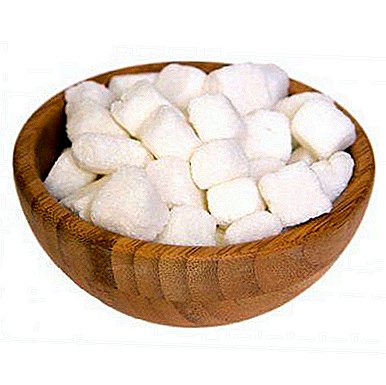 Sugar. Plants also need glucose.
Sugar. Plants also need glucose.Preparing the mixture as follows:
- Mix a tablespoon of sugar per liter of water.
- After dissolving such a top dressing, you can safely water the begonia, but not more than once a month.
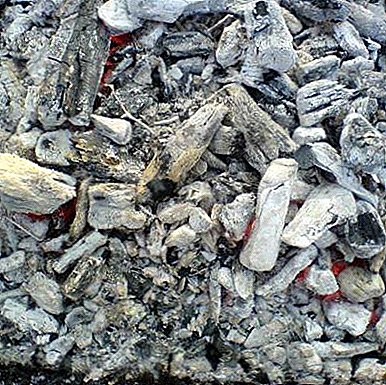 Wood ash.
Wood ash. - Three tablespoons of ash per liter of water.
- Insist on for 7 days.
- Feed no more than once every 15 days.
Also popular are egg-dressing, banana peel, citrus peels and tea leaves.
Priming
Used with a normal level of acidity. Suitable soil composition:
- turf;
- humus;
- leaf land with the addition of river sand and coniferous soil.
Also, the soil can be purchased already in the store. Florists are advised to take:
- "Vermion".
- "Garden of Miracles".
- "Fusco".
- "Respect begonia".
Transfer
Yellow begonia is recommended to replant annually in spring, as in a close pot its leaves grow dull and become less attractive.
Important! To determine for certain the need for transplantation, you need to carefully remove the pot from the dried soil and see: if the roots are visible and there are a lot of them, then it is time to transplant.
Tightening the process will be disastrous, until the roots reach from the holes in the bottom of the pot.
 Transplant step by step:
Transplant step by step:
- Be sure to rinse the selected pot. Ceramic should be soaked for 24 hours in water, then scalded. Plastic just wash and scald with boiling water.
- Before the procedure, shed begonia and leave for 60-70 minutes.
- Lay a layer of expanded clay or charcoal.
- Pour the soil on 2 centimeters.
- Sometimes get the begonia from the old pot.
- Cover the roots with fresh soil.
Charcoal put on the bottom of the pot protects the root system from rot.
Common diseases and pests
Unfortunately, thrips, scale insects and spider mites often attack this flower. The treatment of the problem will help treatment with specialized antiparasitic agents.
Breeding features
Reproduction of the yellow begonia occurs in the standard way:
- grafting;
- leaf;
- seed.
The method of grafting can be described as follows:
- A stalk 10 centimeters long with two or three pairs of leaflets is cut off with a disinfected, or better sterilized, knife.
- The lower pair of leaves is removed, the upper one is cut by half.
- Wait a few hours until the slice is completely dry.
- Treat the cutting with a growth stimulator, for example, with "Root" and insert it into the soil.
- To form a greenhouse, covered with a bottle on top. Suitable both glass and plastic.
- To air the greenhouse about twice a day. A month later, the roots will appear.
- After rooting the bank is removed.
 The sheet method is rather complicated., but this instruction will help to understand:
The sheet method is rather complicated., but this instruction will help to understand:
- A sheet of a parent plant is cut off with a clean knife.
- From the main vein of the leaf to the edges, cut into triangles containing one or two veins.
- Stick triangles vertically in the ground.
- Create a greenhouse, as in the previous instructions, but create even greater humidity. To do this, periodically spray the space inside the bottle.
- After the appearance of new plants, open the greenhouse first for a couple of minutes, constantly increasing the time of the “walk”.
- In about three months, new begonias grown using this method are ready for transplanting into separate pots.
Seed method:
- Bought seeds spread on the surface of the prepared soil, slightly pressing.
- Sprinkle with soil.
- Cover the package, thus creating a greenhouse.
- Do not forget about the periodic airing parnichka.
- After the appearance of two true sheets transplanted into small containers.
We hope that our article answered your questions about the yellow begonia and told you a little more about what you might know about this beautiful flower. Observing the technique of necessary care and adhering to the described rules, you can very quickly find on your window a little sun miracle.


 Yeast. They are a complex feeding for begonias, since they contain valuable auxins and cytokinins.
Yeast. They are a complex feeding for begonias, since they contain valuable auxins and cytokinins. Sugar. Plants also need glucose.
Sugar. Plants also need glucose. Wood ash.
Wood ash. 